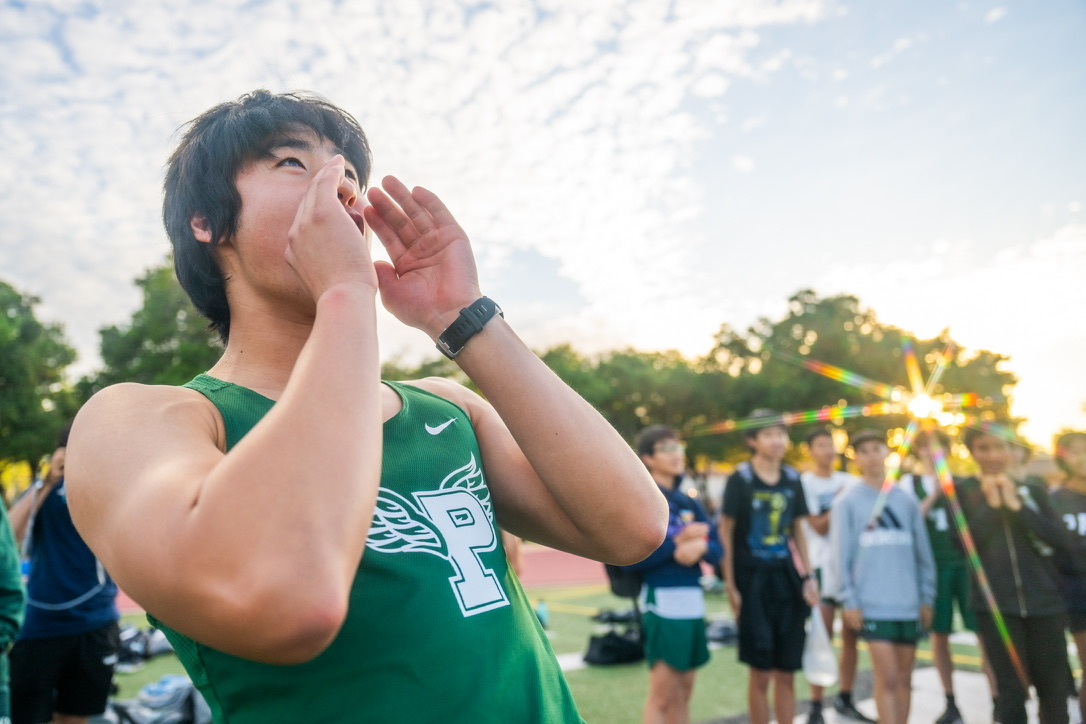Junior Katherine Buechler grew up playing soccer. But during her sophomore year, she suffered her second concussion and was instructed to abstain from playing soccer for the next two weeks. Buechler, anxious to return to soccer, assured her parents and doctor that she was ready to return earlier. Her first game back was the first of a four-game tournament.
As the ball soared towards her head, Buechler headed it. While the pain in her head was becoming more intense, she continued playing.
Later in the game, Buechler again headed the ball, still neglecting the ever-stronger pain in her head. For a third time that game, the ball came towards her, and Buechler headed it. Although she could feel her symptoms worsening, she said nothing to her coach, hoping to continue playing for the rest of the tournament.
However, the trauma to her head was severe enough for doctors to instruct her to completely stop playing soccer, as her brain would not be able to heal unless she stopped entirely. After more than 10 years playing the game, Buechler’s athletic career was abruptly ended when she got her third concussion.
Concussions are common among athletes. According to the Journal of Athletic Training, an estimated 300,000 sport-related traumatic brain injuries, predominantly concussions, occur annually among high school and collegiate athletes in the United States.
Many athletes have to take time off or stop playing sports entirely after multiple concussions to avoid permanent brain damage and allow their brains the time to fully recover.
Common symptoms of concussions include nausea, headaches, disorientation and difficulty focusing.
When a student believes they may be concussed, they are advised to visit an athletic trainer, who administers tests and compares the results to the baseline tests athletes playing high-risk sports are required to take at the beginning of the season.
If it is determined that the player has a concussion, the return-to-learn protocol is followed. This protocol consists of conditioning which involves doing increased activities to test recovery status every day to return to full physical capacity followed by a doctor evaluation once symptoms subside. The doctor’s recommendations are then given to the school, so that students’ accommodations (such as frequent breaks, longer testing time, etc.) can be met.
“The protocol helps makes sure that you’re progressing into activity safely, and so once you get a concussion, you’re more susceptible to another concussion.”
Paly athletics trainer Justine Iongi
These injuries are not always recognized immediately, which can lead to further injury and long-term consequences, according to the University of Utah Health.
Junior Mitali Kessinger said she did not immediately realize she was concussed when she got a concussion during soccer practice.
“At first I thought I was fine, but before bed (about an hour later), I was very out of it and in extreme pain,” Kessinger said. “I also was very sensitive to noise and light and was nauseous.”
After recognizing the symptoms from her previous two concussions, Kessinger went to a doctor and was diagnosed with a concussion.
“My specialist believes that the best way to stay safe moving forward is to make [sure] my head is completely healed before I return to sports,” Kessinger said.
To try to avoid concussions, Paly football coach Nelson Gifford said he teaches his team techniques to minimize head impact.
“We talk (about) using appropriate technique — making sure that we’re, in the case of football, taking the head out of the game and focusing on making sure that we’re using our hands and our shoulders when contacting the opponents,” Gifford said. “We also do things in practice to minimize unnecessary contact.”
Iongi also believes technique is the most important strategy for avoiding concussions.
“You can always account for your actions in the game, but you can’t account for the opposing player’s actions,” Iongi said.
Since some concussions are inevitable, the state of California has established a protocol for when this occurs during a school activity.
California State Assembly Bill No. 2007 mandates that athletes who are suspected of sustaining a concussion during a school athletic activity be “immediately remove(d) … from an athletic activity for the remainder of the day.
It prohibits the athlete from returning to the athletic activity until the athlete is evaluated (and given clearance).”
However, club teams have no such protocol, which can lead to injured athletes returning prematurely.
“(After my second concussion), I went back to soccer before I should have and headed the ball three times, which ended up ending my soccer career,” Buechler said.
Not only are concussions detrimental from an athletics perspective, but they also have harmful effects on academic life, as many of the commonsymptoms make it difficult to remain in a classroom environment and continue learning.
“I was not able to focus for more than 30 minutes without getting a headache—it was very frustrating,”
Junior Katherine Buechler
Kessinger also faced challenges at school as a result of her concussions.
“I missed a week and a half of school, (including finals), and was completely miserable,” Kessinger said.
According to Iongi, there is not a set amount of time that one should wait to return to normal activities after being diagnosed with a concussion, as it varies between people based on the severity of their concussion.
However, it is critical to wait to return to school and sports until one is fully recovered, to prevent further damage.
“Honestly, if you get a concussion, take it seriously and make sure you’re fully recovered before you go back to your sport.” Buechler said, “If you go back too early, it could end up ending your sports career just because you didn’t take those few extra weeks or even days off.”




